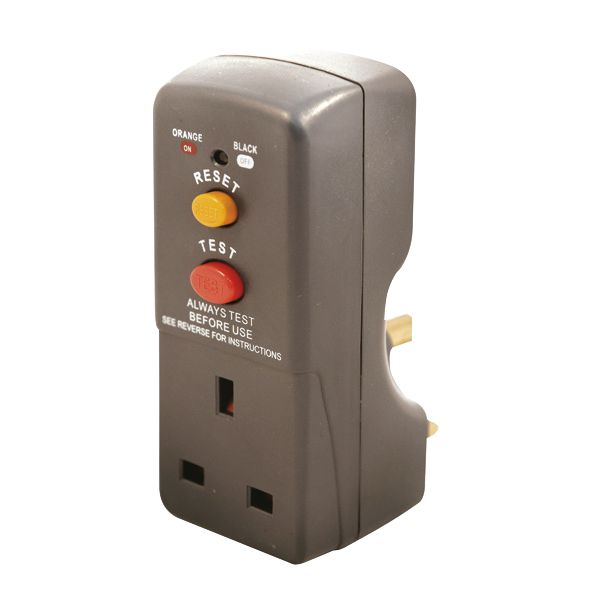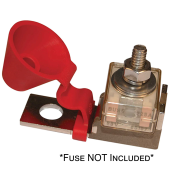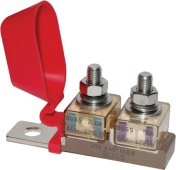I literally just received my order for the DC revamp of my "12V Lithium" system.
With it being originally (2018?) 50W with a 26Ah AGM, I just used the EPEver charge controller to manage panels, battery and load. Each was fused by it at 10A. The battery was connected via one of those cheap autmotive inline fuses at 15A.
I upgraded the battery to a SLA 100Ah Marine battery in 2019. Having killed the AGM from flattening it over winter and learning my first lesson in micro-dc energy systems. MPPT controllers and their RS485 monitoring dongle continue to consume power when the low voltage disconnect has cut the load off. The MPPT controller continued to run the battery down to 9.0V... twice. It was never the same. Unfortunately I did exactly the same to the 100Ah SLA a few times over winter. It too has never been the same.
I ran the 12v DC only loads via an RV power panel, each with fuses, for garage lights, battery charger and talked my spark into installing a 6mm outdoor cable all the way to the office where it runs a bunch of small stuff periodically. Most notable quiet audio stuff.
This year. I changed to lithium. 105Ah 4S bare prismatic cells. Upgraded the MPPT to a EPEver 40A and the panel to a CraigSolar 330W 41VoC.
The 15A fuse had to go, obviously. Initially though it is relying entirely on the MPPT controller for fusing and had no BMS. This required careful set up of the MPPT and constant monitoring and frequent interventions. 25A charge current and a max load of about 10A, all is fine. Even on 10AWG 40A wire. Battery is a liability though in this state.
I added a JK-BMS to take care of the battery so I don't have to! That at least gives me some manual overcurrent protection for that 10AWG cable.
I have an 24V inverter sitting waiting to go, just awaking a second set of 4 cells to go up to 8S, 24V and it was this which I took as the final straw in the "Janky DC spiders nest set up."
I ordered:
16A Dual pole breaker for my single panel. Idea is to have each fused when I get the other 2.
40A Dual pole breaker for the master panel input to MPPT.
40A Dual pole breaker connecting the MPPT to the battery bus bar.
100A covered M8 5 stud bus bars.
100A dual pole breaker for the battery to bus bar connection.
100A dual pole breaker for the inverter to bus bar connection
6AWG wire (<1 meter runs 100A).
Ferrules, lugs, already have hydraulic crimpers and ferrule kits.
Yet to purchase is a 150A DC T-delay fuses + and - of the battery, as a final physical protection.
Also the AC side of things, past the inverter and the grid AC-In I am going to diagram up, email to my spark, have a bit of back and forward and then I'll let him order what I need on his trade account.
Just thought I'd give you some ideas.
Note. For the inverter, if you want to run more than a single appliance or really ANY class 1 appliances (metal case, non-dual insulated), you will need a ground rod. You can use the incoming grid earth, however, you cannot RELY on it. Too long to go into, but there are circumstances, during a power cut or grid fault where all three conductors, E, L, N become live at over 70VAC relative to earth. If the grid drops out the inverter will usually (for a hybrid) switch to island mode and disconnect the incoming ELN and bond the Neutral and Earth on the island. So you will still have a fault current path, your RCD will work, so will fuses, however, you can make no stipulations about where those 240VAC are in relation to the earth.... which you are standing on and most of the metal work in your house is referenced to.... usuaully. TT, TN-S, and all that stuff comes into play, as do some local regulations. It's best to consult a spark.





